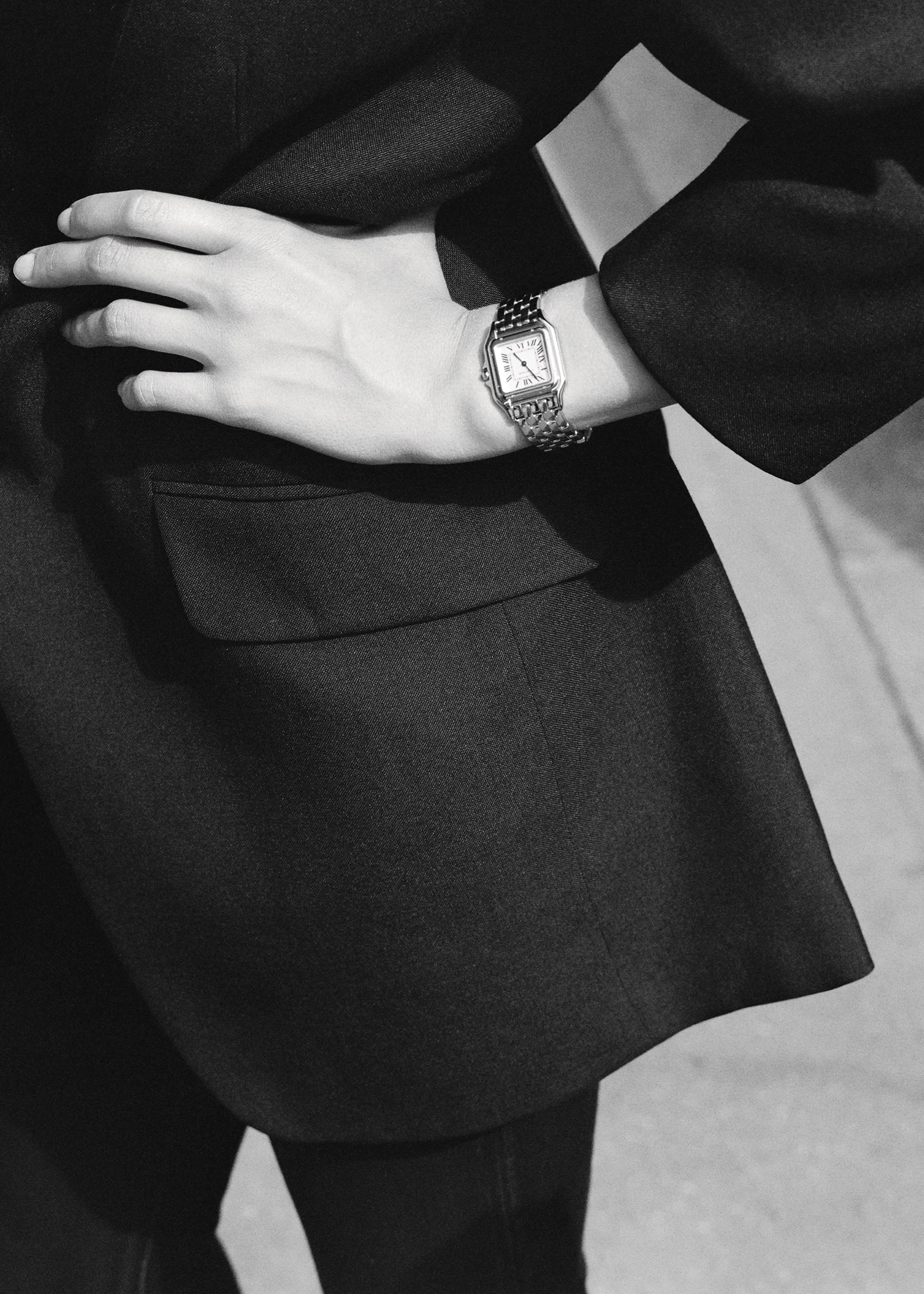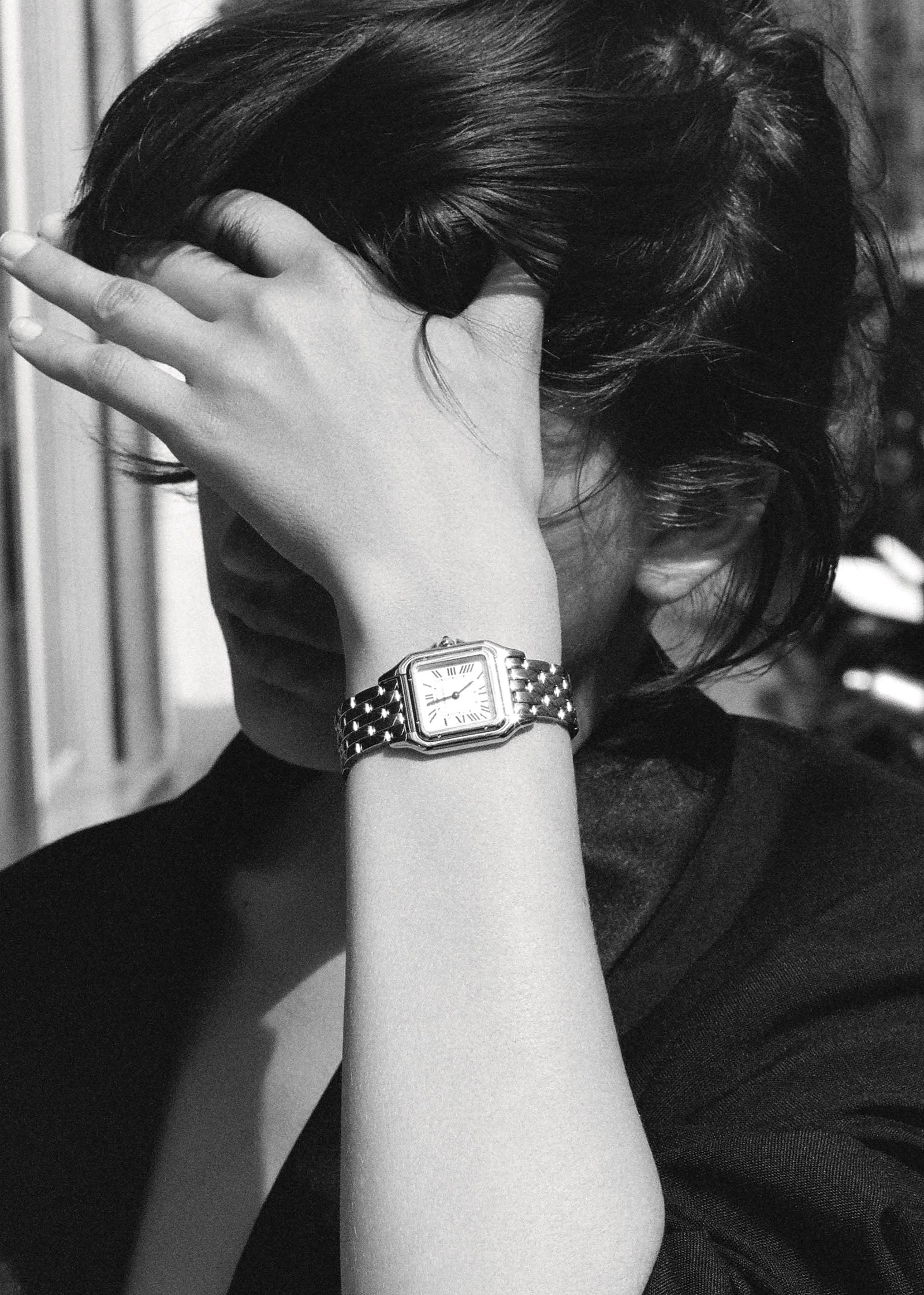Leather folios and clothbound books fill the top floor of the Cartier archive. A vast and empty desk, flanked only by two brass lamps, begs to be littered with century-old designs in gouache and the carefully annotated ledgers of the company’s first sales. One such folio – with tan leather on the outside, stained emerald silk on the inside – houses a photograph of Sir Bhupindra Singh, Maharaja of Patiala. It’s a black-and-white portrait of a handsome man who, over his raw silk kurta pajamas, wears an enormous ceremonial necklace, resplendent with jewels the size of gobstoppers. The necklace – covering his torso from throat to waist – showcases the 234-carat yellow De Beers diamond, alongside more than 3,000 other precious gemstones set by Cartier. The piece was rediscovered in terrible condition in 1998 in a secondhand jewellery shop in London and has since been sensitively reconstructed. Now, this shimmering example of the house’s fabled past lives in the permanent Cartier Collection. The archive in question has been painstakingly collated since 1983.
Such a legend paints a sepia-tinted history of luxury that may appear anachronistic. And yet, as famous as Patiala was for his literal displays of wealth and power, he was also known to wear a leather-strapped Cartier Tank watch. Then the epitome of Western-style chic – owned by the likes of Andy Warhol, Rudolf Nureyev and Truman Capote – this timepiece is almost humble in its modernity when juxtaposed with such an ornament of pomp and circumstance as the necklace; a precedent to the kinds of status symbols that are coveted today. In this contrast lies the cohesion that is key to the house of Cartier: a brand as responsible for adorning contemporary royalty with heritage jewels as crafting wry bestsellers (the Juste un Clou – a solid gold cuff in the shape of a bent nail – being an excellent example).
“We believe that our difference is our style. This style was not born yesterday; it has been built generation after generation” – Pierre Rainero
“At Cartier there’s no nostalgia,” says Pierre Rainero as we sit in his office, overlooking the headquarters’ grand, sunny courtyard. Though his title – Cartier’s director of image, style and heritage – may imply otherwise, it in fact refers to the house’s delicate dance between threads of time. It is Rainero’s job to oversee the curation of the Cartier archives, not in a bid to stare wistfully at the relics of the past, but to continue the company’s constant evolution. Such a role requires reverence for the past and the future. “We believe that our difference is our style. This style was not born yesterday; it has been built generation after generation. We have a history of 170 years,” Rainero says.

As such, a Cartier product must live outside fashion, trends or the ephemeral. “Obsolescence is something that is totally foreign to our work preoccupation. When we create something, we think always in terms of permanence. We always have to ask, ‘What is its value to the future?’” This is why the house will supposedly never create a smartwatch: its usefulness is simply too fleeting, too pinned to its time. Instead, it has now chosen to revisit a recent classic: the Panthère de Cartier watch, originally launched in 1983.
This passion for the perennial is the essence of the Panthère. The watch takes its name from Jeanne Toussaint, “the Panther” – Louis-François Cartier’s righthand woman, design director and clandestine lover. Having signed off all luxury jewellery creations under the house between 1933 and 1970, Toussaint’s feline moniker made reference to her bachelorette lifestyle, her independence, elegance and ferocity. “Hubert de Givenchy once told me that Jeanne Toussaint was not fashionable, she was elegant,” Rainero remembers. “She was not interested in fashion. He told me that she would come to dinner with totally wet hair – she kept to a 1920s short haircut, like a Chinese doll – wearing Chinese pajamas. It was just her style.” In tribute to her dateless, “universally appreciated” taste, the Panthère is now enjoying a renaissance.
“When we create something, we think always in terms of permanence. We always have to ask, ‘What is its value to the future?’” – Pierre Rainero
“I was living in the 16th arrondissement at the time,” explains Rainero of the first launch of the watch. “When I would go to buy my bread in the morning, I would see the elegant ladies wearing the Panthère. It was an object people were happy to show off; it was the thing.” Rainero joined the company in 1984, just one year after the launch of the Panthère. “If you go back to the 80s, there weren’t so many ‘objects’ – not at that level of quality or price. Today you can list, not just at Cartier of course, but in many other territories or fields, many ‘objects’: bags; belts; jackets and shoes. Back then it was not like that, it was the beginning of that era.”
Today, as fashion and retail schedules accelerate at breakneck speed, the list of objects available appears endless; newness, or novelty, the eternal aim. So why relaunch this 80s hit now? “The idea was to have a new watch for women. We thought the Panthère would be a good idea but that maybe we should think about reworking it, because it’s so feminine. But we also had different signs: daughters or even granddaughters bringing the watch in to be repaired, taking it from older generations and wearing it, so we had the feeling that there was something good there. And the more we looked at the object, the more we thought, ‘No, there’s no need to transform it. No need to do anything, it’s good now.’”
“[Jeanne Toussaint] was not interested in fashion. She would come to dinner with totally wet hair – she kept to a 1920s short haircut, like a Chinese doll – wearing Chinese pajamas. It was just her style” – Pierre Rainero
Beside restructuring the bracelet’s articulation and making it waterproof to up to 30 metres, it retains the exact charm of its initial imagining. It is so charming, in fact, that the first Panthère (a £65,000 18-karat rhodiumised white gold and white diamond number) sold within two minutes of its launch on Net-a-Porter – through WhatsApp, of all channels. Such a contrast between the classic design and the of-the-moment route to its purchase cannot be overlooked, for it is just this straddling of both the past and present that defines Cartier’s iconic status. “It’s an endless discussion, what we, ourselves, can call iconic design. I think what qualifies as iconic is something that has no age. If it’s iconic it means that it’s relevant to every period.”
It’s an art of modernity, to craft pieces that despite their roots in luxury, maintain an everyday essentiality. The Love Bracelet, a solid gold bangle that can only be removed with a screwdriver, is an excellent example of such an item. The new waterproofing on the Panthère – seemingly an incidental change – also serves as future-proofing. With little need to remove the watch – by the pool, in the bath, by the sink – it works its way into every aspect of one’s every day, elevating the quotidien. One would be hard pushed to find better insurance of its future, nor testament to its endless allure.
Hair: Yumi Nakada-Dingle at Home Agency using Aveda. Make-up: Fir Wang at Atomo Management using Nars. Models: Franziska Bachoven; Sofia Fanego at Silent Models; Dustin Muchuvitz; and Camille Rochand at Girl Management. Casting: TM Casting. Manicure: Beatrice Eni at ASG Paris. Set design: Sophear at Swan Management. Digital tech: Florian Massal at D-Factory. Photographic assistant: Yves Mourtada. Styling assistant: Grisel Clémence. Hair assistant: Fabio Petri. Set assistant: Céline Corbineau. Production: The Collective Shift. Post-production: D-Factory. Special thanks to Upper East Studio and Codimat
This article originally appeared in Autumn/Winter 2017 issue of AnOther Magazine is on sale now.
